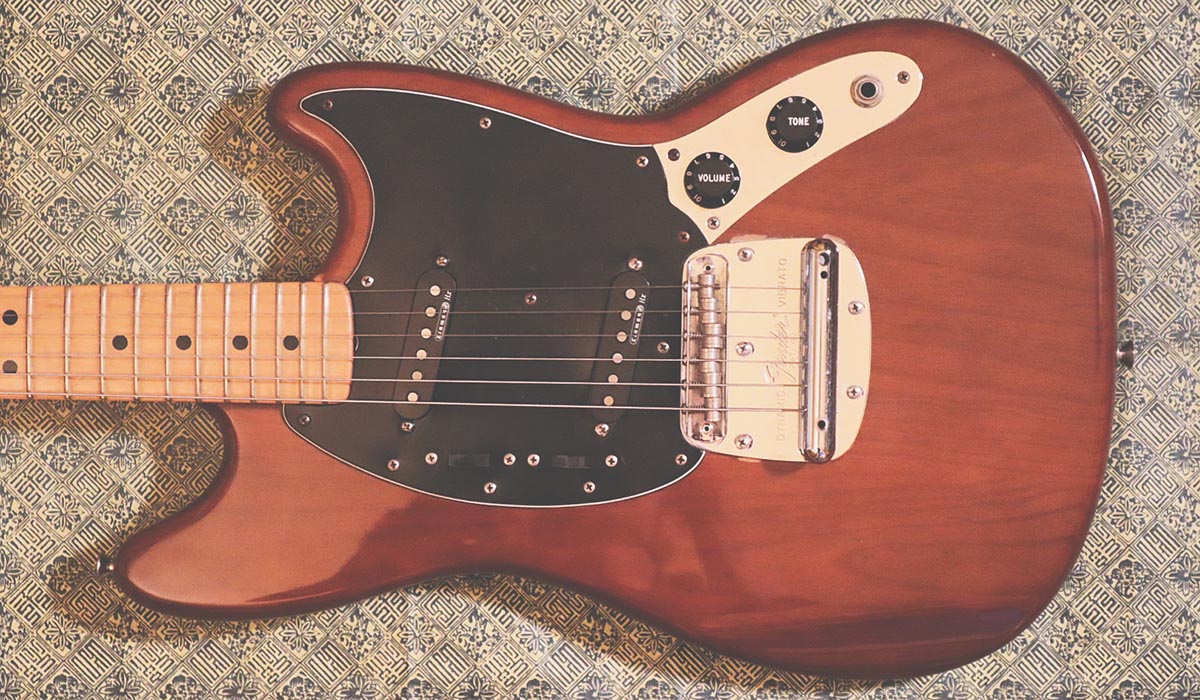The exact age for what is considered a vintage guitar is both subjective and changes depending on the make and model of instrument. However, a common increase in value for standard American made guitar models occurs from the late 60s to the early 70s, thus setting a general date for “vintage” guitars as anything manufactured before 1970.
Table of Contents
Vintage Dates for Fender American Guitars
Fender Stratocaster – Fender guitars began going through significant changes during the CBS era which began in 1965. By 1968 they had changed from the nitrocellulose finishes that were common at the time and define what many consider to be a defining quality of vintage guitars, to the hard polyurethane that’s still in use today.
There is a pretty distinct drop in price from 60s Strats to 70s Strats, even with late 60s guitars being finished in the new poly. Despite this, the average price for a very good condition 1969 sunburst Strat is $14,109 while the average price for a very good 1970 sunburst Strat is $11,606. This single year accounts for a 17.7% drop in prices on the used market. This is one of the most dramatic price cliffs on year to year prices for the Stratocaster, indicating that true vintage for the Fender Strat is currently prior to 1970.
Fender Telecaster – Similar to the Stratocaster, Telecaster prices see a significant drop from the late 60s to the early 70s. The average cost of a late 60s blonde tele in very good condition is $9,763, while early 70s blonde Teles in the same condition average at $6,278. This is a 35.7% decrease with nearly no difference in the instrument, just a couple of years across the decade line. This is a great indicator that Fender Telecasters are considered vintage prior to 1970.
The Problem With The 1980 Cutoff
While many consider a vintage guitar to be something made prior to 1980, we need to look at the term “vintage” and how it’s used in the guitar world. Borrowing from the wine industry’s use of the word, we can use elements of this definition to inform the way we consider age and quality, and their murky relationship when it comes to older guitars.
In wine terminology, vintage is the process of harvesting grapes for winemaking, and doing so from grapes that came from a specific vineyard in a specific season. Thus a vintage also applies to the year that the wine was produced. Vintage in this context is meant to denote time, and this is one we’re most familiar with in regards to guitars. [1]
If we’re talking about a vintage Les Paul or a vintage Hohner the connotation is age. Both manufacturers Gibson and Hohner manufactured guitars starting in the the mid-1900s, but have very different reputations and pedigrees.
There’s another force behind the word vintage, one I’d argue carries more importance and yet contains the most subjectivity. This is the issue of quality. Another definition for the word vintage is “the time that something of quality was produced.”
I like this definition because it pulls both age and quality into the word. Just because something is old doesn’t mean that it is necessarily good. Therefore, all old guitars are not necessarily vintage.
This is my primary objection with setting an arbitrary date before which instruments are considered vintage. I know that that device is generally understood to be flexible and used primarily as an easy method for categorization. However, for many players or those new to the guitar world it can make things quite confusing.
Here’s an example. I have a Fender Mustang from 1979. Now this guitar isn’t the sought after ‘stang of the 60s with the cool competition racing stripes and nitro lacquer bodies. No, this Mustang is “mocha” colored and to be honest, feels like a 2×4 with strings. The short scale neck along with small frets and a 7 ¼” radius neck just make for an awkward guitar that plays a bit like a molting snake. It’s got some character, and certainly some grunge cred, but overall it’s the guitar that gets the least amount of playtime because it just doesn’t do it for me.
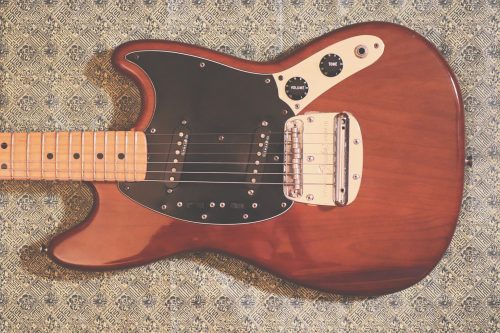
On the other hand, a good friend picked up an early 90s MIJ Fender Jaguar with a bound neck and some incredible original pickups. The quality rivaled the custom shop jags I’ve played and it turned me on to all of the made in Japan Fenders that have a strong following for a very good reason.
Comparing both of those guitars, I’m much more inclined to consider the 90s MIJ Jaguar a vintage instrument than my 1979 Mustang, even though it was made in the USA and 15 years earlier. And the reason is because of quality.
Now, there’s a never ending amount of snake oil and vibe nonsense that was created by a wiley ad man or (more likely) in the ungodly depths of some internet forum, so I’m aware that this topic treads fully on unholy ground. Yes, quality, pedigree, and provenance are all quite often subjective and laiden with these ideas that one thing is ‘better’ than the other for reasons that often don’t make much sense.
Does that mean that a guitar in the 90s could be considered vintage? Would I consider an ES-335 made in 1992 to be a vintage guitar? Not at all, so why does an import guitar from the same year potentially make the cut?
There’s another factor which has to do with the aspect of rarity or difficulty to find. Gibson has made thousands of 335s throughout the years, while the 90s MIJ guitars embody a certain time, spanned physically by their production years.
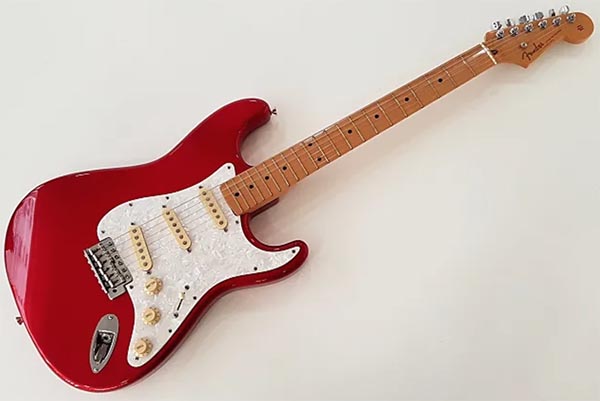
Vintage requires age yes, but also quality, brand worth, demand, and a limited supply.
What Makes a Guitar a “Quality Guitar”?
As we’re talking about quality, it’s important to stop and ask “ok, but what exactly does quality mean?” Sure, it’s about materials and the source and makeup of woods and hardware used on the instrument. But how many regular players actually know that much about maple that they could spot a poor quality cap on a vintage Les Paul? Probably not many.
I’d argue that much of it isn’t really about the actual quality of the materials, but about the Brand’s ability to build a reputation for using high quality materials. Sure, as a manufacturer you’ll release some bad apples into the wild, but your overall reputation keeps the value of the instrument up. Especially in an internet marketplace where guitars can’t be compared live before buying.
Generally speaking however, a quality guitar will have an even finish, clean paint job, good hardware, tone, minimal electrical issues (there’s a point where they do become bits of character), and attention to detail.
And maybe that’s the overarching theme of quality guitars. It’s the details.
I don’t want to drag any manufacturer’s names through the mud, so I’ll keep this one anonymous. I’ve had a semi-hollowbody for about 5 years and recently it started to develop some electronics issues. The neck pickup was cutting out and oddly, rapping on the volume knob seemed to sometimes get the pickup to kick back in. Seemed to me like I had a bad pot and it would need to be replaced.
So I finally got the free time to dig in and after pulling all of the electronics out of the guitar found that the neck pickup had never been soldered to the pot. Let me say that again, the neck pickup was never even soldered to the volume pot. I think my jaw hit the floor when I saw this.
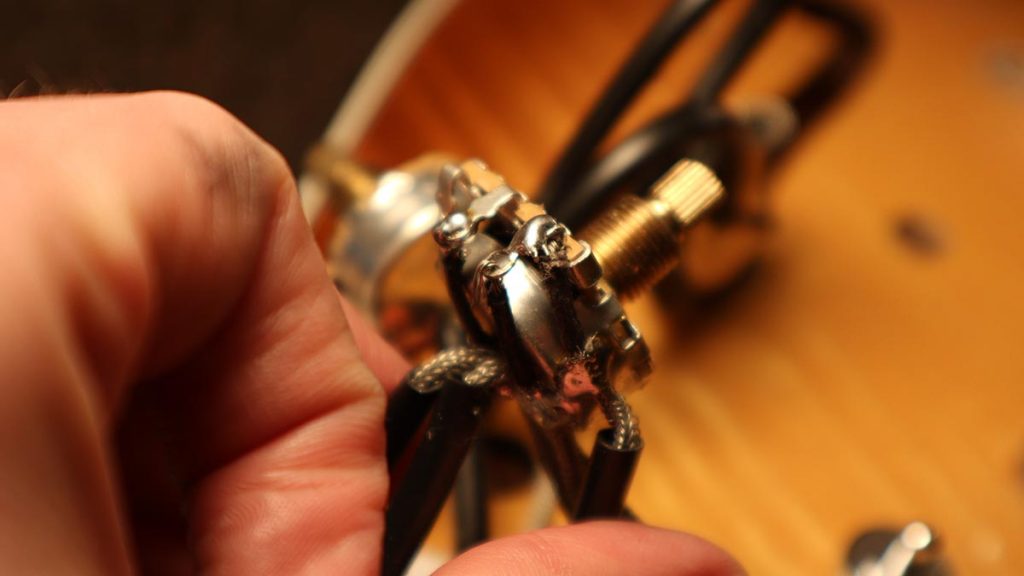
The pickup lead was just pinched around the pot lug and had miraculously worked for quite a few years before finally loosening up to the point where it lost connection.
This is a guitar with a new price tag of over $2000, and one of the pickups wasn’t soldered into the guitar. This is also an American brand that, generally speaking, has a loyal following and a good reputation. These are the details that matter.
Characteristics of a Quality Guitar
This is a topic fraught with subjectivity, so I’m going to do my best to create an actual list of characteristics one should look for when evaluating a guitar’s overall quality. These factors are regardless of age or brand.
Neck Straightness
Guitar necks can be adjusted, and being made of a long chunk of wood are expected to move around a bit as time goes on. A quick look down the neck from the headstock to the body will uncover any weird humps or twists.
Humps and dips in the neck are somewhat expected and leveling a fretboard is standard practice when refretting the neck of an older guitar.
Neck twisting on the other hand is a sure sign that the neck wood is of poor quality, or is made from uneven grained wood.
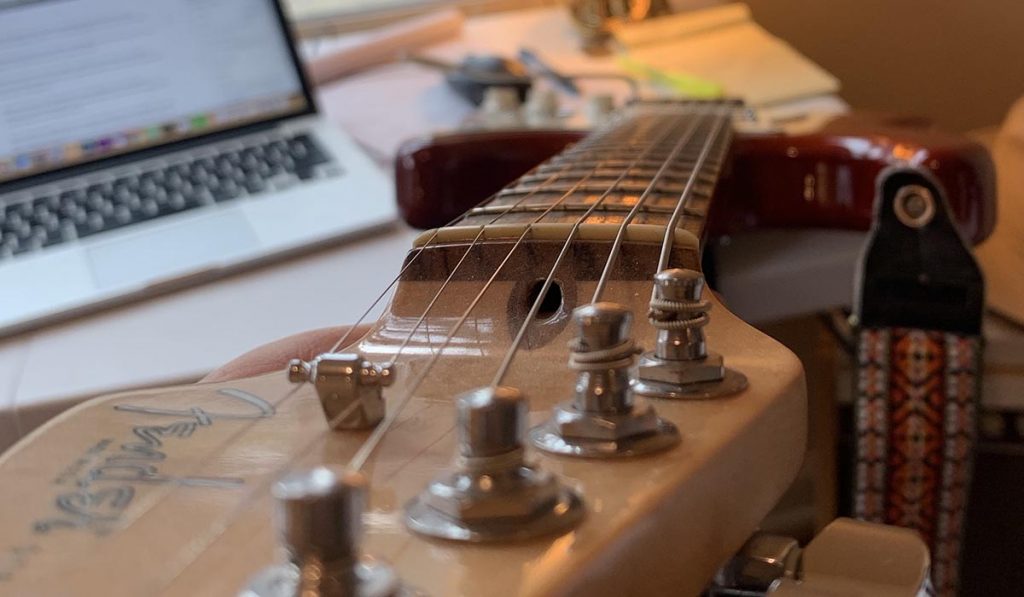
Take a look at this article on guitar humidity. In the same way that an acoustic guitar top is made from a piece of quarter sawn wood, a good neck has even, vertical grain.
When the grain is perpendicular to the fretboard, the neck resists movement down the length of the neck (relief) and also side to side which would result in a twisting motion.
Neck twists are ugly, and only so much repair work can be done on a neck with a bad twist. Overall neck straightness and lack of twisting are great signs of quality guitars.
Fretwork
Frets are expendable and will eventually wear out. Read: All You Need to Know Guide to Guitar Frets. The amount of life left in a fret isn’t something I’m super picky about, but the details around the frets are important. How do the fret ends look?
A shrunken fingerboard that has dried from low humidity will send the fret ends poking out, which is pretty normal, but poorly dressed frets will look bad no matter how well you keep your guitar humidified.
Fret dressing consists of filing the fret tang ends down to be flush with the fingerboard, the fret end will be slightly bevelled back towards the center of the fret, and the edges will be slightly rounded as to not be sharp or catch on anything. Finally, a well dressed fret won’t show any signs of file marks or grooves and will be sanded and polished cleanly.
These are the small details which really speak to the workmanship of a guitar maker.
Hardware
The hardware on a guitar consists of tuning machines, bridge parts, pickguards, etc. While some vintage instruments have pieces of hardware that are deteriorating from age, like Gibson’s original Kluson tuner buttons, most hardware should hold up and show their quality of both material and installation.
If tuners are installed crooked, or a pickguard isn’t quite straight those are good indicators that the quality of the instrument might not be the best. Both of these indicate attention to detail and give an idea of what the work environment is like.
Metal parts should show their age if it’s an older guitar. Parts dipped in a cheap chrome or paint will be obvious and it’s a clear sign to stay far away.
Electronics
If the guitar is an electric, I look at the electronics which include the pickups, pots, switches, jack, and wiring. If you can get a good view of the soldering joints, you can determine the quality of workmanship that went into the wiring process. Wire gauge is a good indicator as well regarding component quality.
People have filled terabytes of information with discussions about caps, resisters, pots and their seemingly magical qualities. I won’t entertain most of those discussions here and consider them to be the focus of tone chasing hobbyists who don’t actually play. That may sound harsh, and it is. Stop discussing caps on message boards and play your damn guitar. I promise you wouldn’t be able to tell the difference in a blind test.
Well crafted components have great tolerances. At a high level, you can tell the quality of a pot or a jack by how smoothly it turns and how tight an instrument cable fits. Again, these aren’t an absolute indicator but they help to inform the overall quality of an instrument.
Tone
Most guitars get better with age, giving vintage instruments a magical quality to their tone that can only be imitated, or attempted to be imitated, by boutique companies. And generally, I’d say this is true. I can still remember the tone of an early 1960s Fender Jazzmaster that I did some repair work on years ago. The guitar was in pristine condition, and the sound of those thick p90s through a fender tube amp could be spread on toast.
Guitar companies historically have not had great quality control, causing such things as zebra pickups with mismatched bobbin colors, or the famed Gibson PAF humbucker that sported a wide range of Alnico magnets depending on which bar was grabbed from the bucket that day.
When it comes to acoustic guitars, the aging of woods and the condition that guitar has been kept play a massive role in the instrument’s tone. I remember working on a customer’s guitar, and it was his pride and joy. He brought in this Martin D-35 from the 70s and was so proud to show it off. While the instrument looked great, it sounded like a wet log when I tried to play it. It was one of the worst sounding acoustics I’ve ever played! Age does not equal quality.
Finish
Traditionally, vintage instruments are finished with nitrocellulose lacquer. While salesmen and forum users will tell you that nitro allows a guitar’s body to “breath” and opens up faster or better than other finishes, the truth is that there is essentially no difference in a guitar’s tone given a quality polyurethane or nitrocellulose finish. Especially with electric guitars, the finish is all cosmetic.
What nitro does provide however, is the consistent aging which brings that sought after “old” look because of the finish’s inability to truly protect the instrument. Nitro cracks (checks), fades, wears away, and discolors throughout the years showing a guitar’s use, and telling that guitar’s story. Poly on the other hand protects a guitar too well. 30 year old guitars covered in poly look essentially the exact same as the day they rolled out of the plant.
Whether aged or not, a good finish will provide a quality feel and look to a vintage instrument, enhancing its age and allowing the guitar’s unique story to be told.
Binding and Inlays
This might be the easiest place to spot cost cutting and low quality workmanship. Inlay work in the headstock, fingerboard, and guitar body takes considerable time and precision to get right. Cheaper instruments will have sloppy cutouts around the fingerboard inlays, making it obvious that cranking out product was more important to the manufacturer than getting something just right.
Similarly, binding can be done with excruciating detail, highlighting a guitar maker’s attention to even the smallest aspects of a guitar’s design. Look closely at the binding ends and joins, are they just 90 degree angles, or are they 45’s with small finishing pieces. Look at the small details and see if you notice anything, good or bad. This tells you a lot about the overall quality of the instrument.
Inconsistency as Variable Supply
When talking about tone, I mentioned the inconsistencies that came as a result of lax quality control, or cost saving measures from manufacturers. Oddly enough, some of these measures actually have led to some of the most valuable vintage guitars on the market with some of the most infamous components.
Why is this if attention to detail is one of the biggest factors in quality? Well these inconsistencies actually help create the sense of rarity when a line of guitars could produce something amazing or spit out a dud.
Martin, Gibson, Fender… all of those high end American manufacturers have priceless instruments, and others that are the duds.
It is these inconsistencies that help create unique guitars which capture our imagination and lead to us talking about them for decades after. It is also these inconsistencies which make us feel like treasure hunters. You might get your hands on a “vintage” instrument, but does it have the mojo, does it have the vibe? That is the real gold mine.
Conclusion
Taking all of these qualities discussed into account, my definition of vintage is pickier than just before 1980. A guitar needs to have some age to it, sure, but also needs to have been manufactured with care and attention to detail. While not being perfect, the inconsistencies that do exist help to create something unique.
Cheesy as it is, I like the notion that a guitar has stories to tell. And a guitar that has been sitting in its case for the past 60 years has a pretty boring story. Character comes from age, quality, and yes some of that magic, voodoo, vibey tone we all want so badly.
